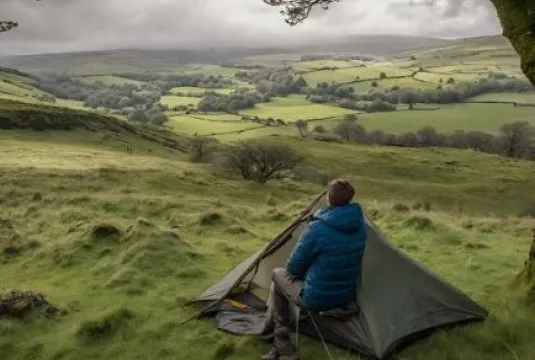Embrace the Wild
A Guide To Responsible Wild Camping in Derbyshire and The Peak District

Introduction:
Nestled in the heart of England, Derbyshire and The Peak District offer breathtaking landscapes that beckon outdoor enthusiasts and nature lovers alike. For those seeking a truly immersive experience, wild camping provides a unique opportunity to connect with the untamed beauty of the region. However, it's crucial to practice responsible wild camping to preserve the environment and respect local regulations. In this guide, we'll explore the best locations for wild camping in Derbyshire and The Peak District, highlighting where it's permitted and where it's not.
Permitted Locations:
Edale Valley:
Known as the gateway to The Peak District, Edale Valley is a popular starting point for the Pennine Way. Campers can find designated spots along the Pennine Way, but it's essential to adhere to the "Leave No Trace" principles. Respect the natural surroundings, pack out all waste, and use a stove for cooking to minimize environmental impact.
Kinder Scout:
This rugged plateau is a haven for wild campers seeking solitude and panoramic views. Camping is permitted on Kinder Scout, but campers must be at least 100m away from any water source. The delicate peat bogs need protection, so campers are urged to tread lightly and avoid creating new paths.
Bleaklow:
Offering a more secluded camping experience, Bleaklow is another gem in The Peak District. Campers are advised to set up their tents at least 300m away from any road or building. This ensures a peaceful experience for campers while protecting the local ecosystem.
Upper Derwent Valley:
Managed by the Peak District National Park Authority, the Upper Derwent Valley provides designated wild camping areas. Permits are required, and campers must stick to these designated spots to minimize their impact on the environment. The reservoirs and surrounding landscapes are sensitive, making responsible camping crucial for conservation efforts.
Black Clough:
Located near Snake Pass, Black Clough offers a serene setting for wild camping. As always, campers should follow the "Leave No Trace" principles and avoid camping directly beside the stream to protect the delicate riparian ecosystem.
Prohibited Areas:
Chatsworth Estate:
While the Chatsworth Estate is a stunning location, wild camping is strictly prohibited on private land. Respect the estate's rules and consider alternative locations to pitch your tent.
Stanage Edge:
A popular destination for rock climbers and hikers, Stanage Edge is not suitable for wild camping. Its popularity means it requires careful conservation, and camping is not allowed to protect the fragile vegetation and wildlife.
Carsington Water:
As a designated water sports and recreational area, Carsington Water does not permit wild camping. Visitors should explore alternative locations within the Peak District National Park that are more suitable for camping.
Conclusion:
Wild camping in Derbyshire and The Peak District offers a unique and intimate conndownloadection with nature. By choosing permitted locations and following responsible camping practices, you can enjoy the unparalleled beauty of the region while preserving its delicate ecosystems. Remember to obtain any necessary permits, adhere to local regulations, and leave these stunning landscapes just as you found them, ensuring that future generations can continue to revel in the untamed allure of Derbyshire and The Peak District.
Further information